뉴스&스피킹(영자신문)
하루 10분이면 영어에 대한 두려움을 극복하고 누구나 유창하게 영어를 구사하실 수 있습니다.
-
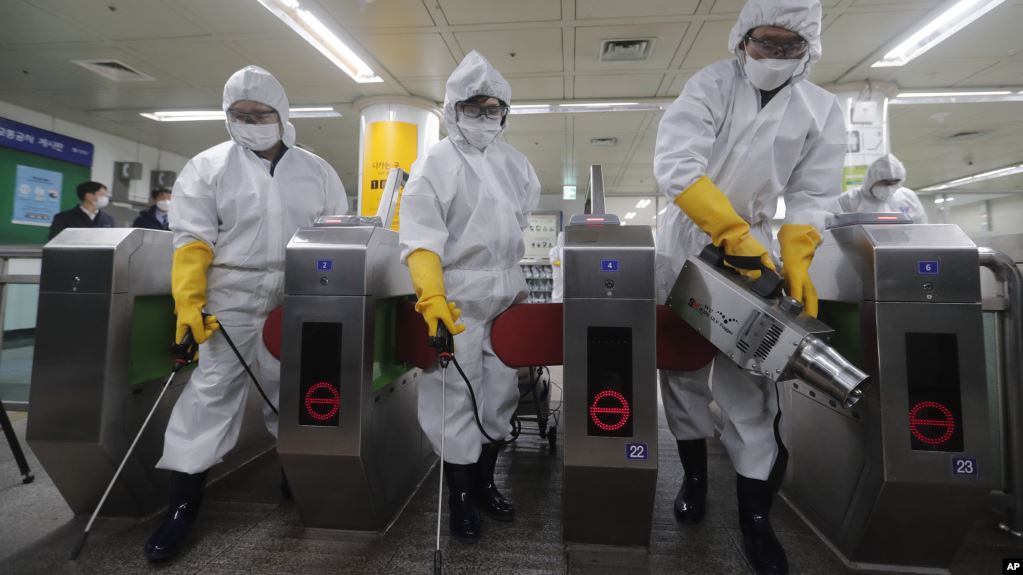 WHO: Coronavirus May Affect All Countries The World Health Organization (WHO) says the new coronavirus could spread worldwide.
WHO: Coronavirus May Affect All Countries The World Health Organization (WHO) says the new coronavirus could spread worldwide.
“The outbreak is getting bigger,” WHO spokesman Christian Lindmeier told reporters on Friday in Switzerland.
Coronavirus cases have been confirmed in almost 60 countries. At least seven countries reported their first cases in the past 24 hours. Those countries are Azerbaijan, Belarus, Lithuania, Mexico, the Netherlands, New Zealand and Nigeria.
The new coronavirus has infected more than 83,000 people around the world. Mainland China, where the virus was discovered, has the largest number of infections. On Friday, China reported 327 new cases, its lowest number since January 23. The country now has more than 78,800 cases and almost 2,800 deaths from the disease, called COVID-19.
About three-fourths of all new infections are being reported in countries other than China. Most of the new cases are in South Korea, Japan, Italy and Iran.
Mike Ryan is head of the WHO’s emergency program. He said Iran’s outbreak may be worse than what is known. Iran has reported the most deaths outside of China - 34 from 388 reported cases.
More than a health crisis
The continuing health crisis also became an economic crisis. The Reuters news agency reports that the world’s financial markets lost $5 trillion this week. It is the worst week for stock shares since the 2008 financial crisis.
On Friday, Switzerland joined other countries in banning major public events to try to limit the spread of the virus. Swiss officials cancelled the 2020 Geneva Motor Show, one of the automobile industry’s most important gatherings.
On Thursday, Saudi Arabia announced a temporary ban on foreigners from entering the country to visit Islam’s holiest places. Saudi officials said the move is meant to slow the spread of the virus. The decision has affected thousands of Muslims already traveling to the country. It also could have an effect on millions more with plans during the holy month of Ramadan and the hajj.
In Japan, Prime Minister Shinzo Abe called on schools to close until the end of March. The city of Tokyo is preparing to hold the 2020 Summer Olympics in July, but discussions were being held about whether to postpone the games. Japanese officials declared a state of emergency in the northern island of Hokkaido on Friday because of the spread of the virus there. Tokyo Disneyland and Universal Studios Japan closed their doors to visitors and cancelled events.
South Korea reported 571 new cases of the virus on Friday. The country now has 2,337 cases of the virus, more than any other country outside of China.
Speaking from his eatery at the Gwangjang Market in Seoul, Kim Yun-ok told one reporter, “there’s almost no one coming here.”
In Italy, where the number of new cases is growing and the number of visitors shrinking, Prime Minister Giuseppe Conte feared his country will face a recession.
Simone Venturini is an official in the Italian city of Venice, where tourism has already been hurt by last year's flooding. With more cases of the virus reported in Italy, Venturini said, “the damage that worries us even more is the damage to the economy.”
Kanya Yontararak owns a women’s clothing store in Bangkok, Thailand. Sales at her store have dropped sharply. She is not making not enough to pay her rent. After years of dealing with flooding and the country’s political crises, Yontararak said, “Coronavirus is the worst situation [she has] ever seen.”
I'm Ashley Thompson.View -
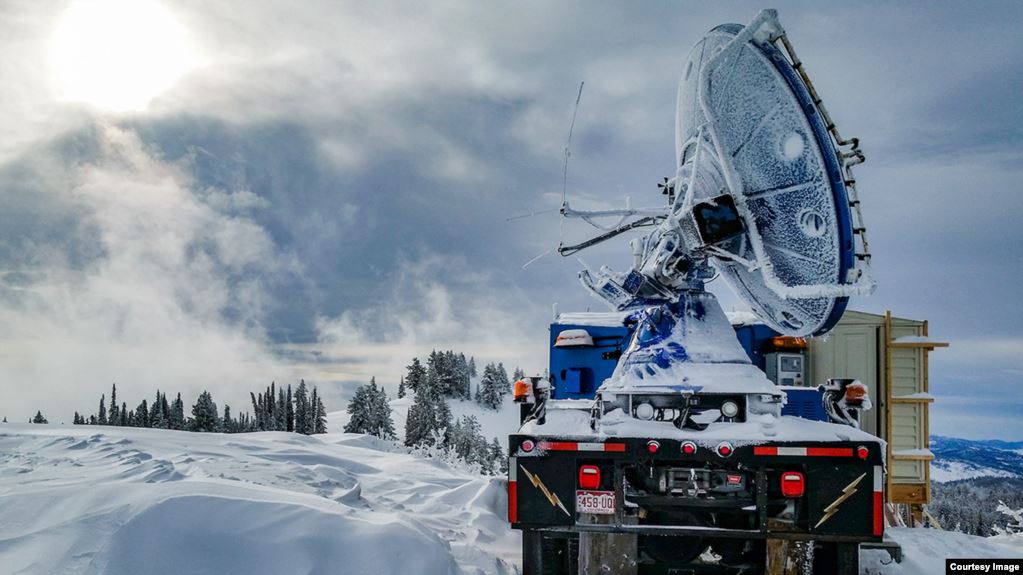 New Research Confirms Cloud Seeding Can Produce Snowfall Scientists say they used new measuring methods to confirm that cloud seeding can produce snowfall under the right conditions.
New Research Confirms Cloud Seeding Can Produce Snowfall Scientists say they used new measuring methods to confirm that cloud seeding can produce snowfall under the right conditions.
Researchers used radar and other instruments to measure snowfall levels during experiments carried out in 2017 in the American state of Idaho.
The experiments involved scientists from several American universities, as well as the U.S. National Center for Atmospheric Research, or NCAR. A study reporting the results was recently published in Proceedings of the National Academy of Sciences.
Cloud seeding has been tested in parts of the United States since the 1940s. It involves injecting various substances into clouds to produce precipitation – rain, snow or ice that falls to the ground. The process can cause ice to form and build up inside the clouds until it falls.
Some western U.S. states – including Idaho and Colorado – have increased cloud seeding in recent years to help meet a growing water demand. Until now, however, it has been difficult for scientists to measure the effectiveness of the process.
Researchers have mainly used instruments to compare the amount of precipitation from seeded clouds to similar clouds that were not seeded. But such studies have brought mixed results. This is partly because many elements influence natural precipitation, which makes it hard to narrow down exact cause and effect results.
The research operation over western Idaho was called SNOWIE. It involved shooting small amounts of a chemical compound called silver iodide from an airplane into clouds. The chemical can cause water in the clouds to freeze into ice and then fall as snow.
In the new experiments, the scientists used radar equipment together with precipitation measuring instruments to collect data. The use of airborne and ground-based radars permitted the team “to observe the entire process and compare the side-by-side seeded and unseeded areas,” the NCAR said in a statement.
In at least three cases, “the seeding measurably boosted the snowfall across the targeted watershed,” the statement said. In some areas, the cloud seeding created new snowfall where no natural snow existed. One cloud seeding flight resulted in precipitation that produced snowfall for about 67 minutes.
The researchers estimated the three cases described in the study produced a combined precipitation total that could fill about 285 Olympic-sized swimming pools.
The researchers also used computer modeling to study precipitation measurements during simulated weather activity. The scientists say they hope to use the real results from the new experiments to improve future computer modeling predictions.
Sarah Tessendorf is a scientist at NCAR. She helped lead the experiments. She called the results a “revelation” to helping understand the effectiveness of cloud seeding technology.
But Tessendorf noted that the experiments also demonstrated that successful cloud seeding operations are dependent on certain conditions. There must be existing clouds to seed. The results are also dependent on local atmospheric conditions, such as temperature and wind.
Tessendorf said additional research would be required to study the long-term costs of major cloud seeding operations. “The seeding produces ice and that ice can form snow, but is it enough additional snow to make it cost-effective?” she asked.
While future experiments will seek to address those bigger questions, “we still have plenty of work to do to get there," she added.
I’m Bryan Lynn.View -
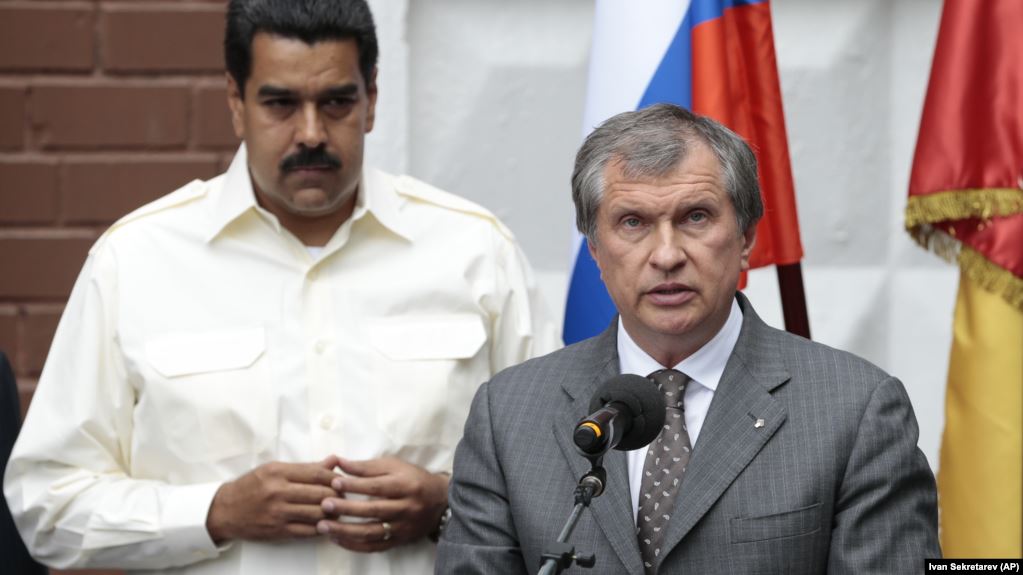 US Struggles to Break Ties between Russia, Venezuela In October 2016, the head of Russia’s largest oil company traveled to the birthplace of Hugo Chávez, the former president of Venezuela.
US Struggles to Break Ties between Russia, Venezuela In October 2016, the head of Russia’s largest oil company traveled to the birthplace of Hugo Chávez, the former president of Venezuela.
Rosneft chief executive officer Igor Sechin brought with him a singing group from Moscow to celebrate the presentation of a huge statue of the former leader. Chávez had died three years earlier.
Sechin’s visit marked a turning point in the relationship between Russia and Venezuela. He spoke to a crowd of government supporters in Spanish, which he learned in his days working for the Soviet military in Africa.
“We have no choice between victory or death,” said Sechin, repeating the words of a Venezuelan independence hero. He was describing the deepening ties between Russia and Venezuela in their competition with the United States. ”We must achieve victory,” he said.
Now the U.S. government wants to break up that growing partnership as part of its campaign to remove Chávez’s replacement, Nicolás Maduro.
U.S. government sanctions
Earlier this month, the U.S. Treasury Department barred American companies from doing business with Rosneft Trading SA. It accused the company, the subsidiary of Russia’s state-owned oil business, of supporting Maduro as he seeks to avoid U.S. sanctions.
For months, U.S. officials have been warning foreign companies that they could face action if they continue to do business with Maduro and his government. Those warnings have been directed mainly at Russia.
The U.S. government made it illegal for Americans to buy crude oil from Venezuela a year ago. And government officials say Russia has processed about 70 percent of Venezuelan oil sales since that time.
Francisco Monaldi is a Venezuelan oil expert at Rice University in Houston, Texas. He told The Associated Press the latest actions should cause concern among companies in countries that continue to partner with the Venezuelan state-operated oil company PDVSA.
The U.S. action could also lead to the ending of a special license for Chevron. The permit has so far kept the California-based company from having to pull out of Venezuela. Chevron is a partner in joint operations with PDVSA. Together they are responsible for about a fourth of Venezuela’s total oil production.
In a statement, PDVSA condemned the U.S. government for what it called “economic assassination” aimed at taking control of Venezuela’s oil industry. Foreign Minister Jorge Arreaza said the new actions would support Venezuela’s case against the administration of U.S. President Donald Trump. Venezuela is accusing the administration of crimes against humanity and is taking the case to the International Criminal Court.
Rosneft operates several oil fields with PDVSA that it has controlled since Chavez’s government forced U.S. companies out of the country.
But oil experts say that as the new, go-to supplier of the country’s crude oil supplies, Rosneft wins two ways. First, Rosneft buys Venezuela’s high quality Merey 16 crude at a greatly reduced cost. It then uses money from sales of Merey 16 to pay down $6.5 billion lent to PDVSA since 2014 for the purchase of Russian-made weaponry and other goods.
Venezuelan oil exports
To avoid problems for buyers in China and India, Rosneft has been using oil transport ships that try to hide what they are carrying. They turn off their required tracking systems and carry out risky ship-to-ship exchanges off the coast of West Africa and other areas.
In the short term, Francisco Monaldi expects Maduro will have to pay more to find someone else to take on the added risk of moving the country’s oil. That means Venezuela will have even less money to import food and medical supplies or repair its failing electricity infrastructure. And with storage centers already full, production that is already at a 70-year low is likely to fall even further, he added.
Still, nobody expects oil sales from Venezuela to dry up completely. That is unless the U.S. navy blocks all of the country’s ports. The Trump administration has refused to deny it will do so, but has shown no sign of taking that action.
The United States leads a group of now nearly 60 nations that recognize Venezuelan opposition leader Juan Guaidó as the country’s rightful leader. The group considers Maduro’s 2018 re-election illegal. In turn, Russia has accused the Trump administration of spreading false information to engineer an overthrow of the government.
Richard Nephew is an energy researcher at Columbia University in New York. He helped design the U.S. sanctions policy while at the State Department during the presidency of Barack Obama. Nephew said by not dealing with Rosneft itself, and only going after one of its many parts, the effect on Russia’s continued support for Maduro will likely be limited.
“This seems more like a warning shot designed to look bigger than it actually is,” he noted. “It’s shooting someone who is Russian sounding without really punishing the Russians themselves.”
Several pro-Putin lawmakers were dismissive of the Trump administration’s efforts. They said they would appeal to the World Trade Organization to remove what they described as unlawful U.S. actions.
“I think this issue can be resolved,” Vladimir Dzhabarov, a member of Russia’s upper house of parliament, told RIA Novosti news agency. “They’re smart over there (in Rosneft) and they will find a way to get around it.”
I’m Dorothy Gundy.
And I’m Pete Musto.View -
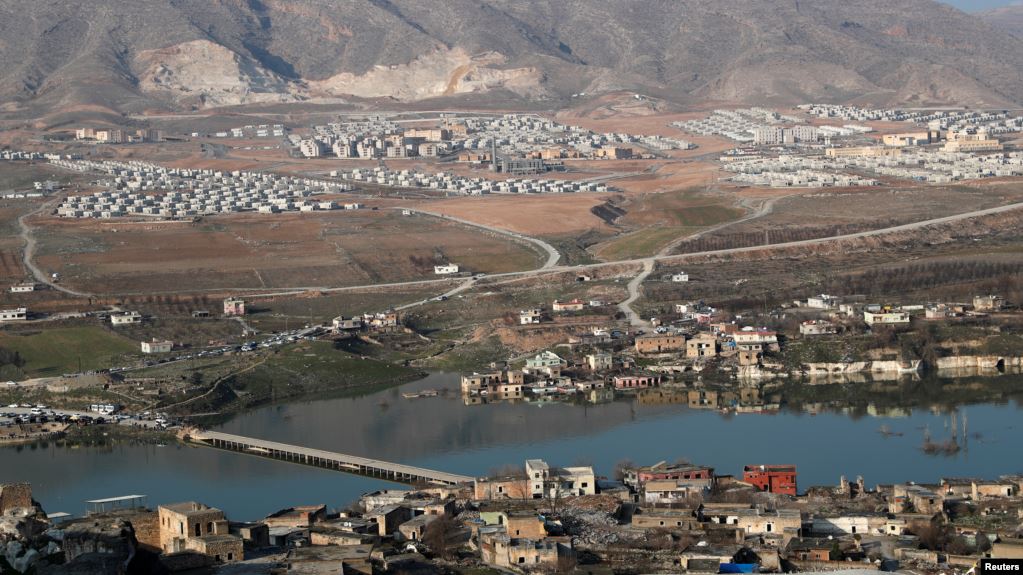 ‘History Disappears’ as Dam Water Floods Ancient Turkish Town Every day, hundreds of people gather on the edge of the Tigris River in southeast Turkey. They stand and watch as a 12,000-year-old town slowly disappears.
‘History Disappears’ as Dam Water Floods Ancient Turkish Town Every day, hundreds of people gather on the edge of the Tigris River in southeast Turkey. They stand and watch as a 12,000-year-old town slowly disappears.
Rising water levels from the Ilisu Dam are flooding the ancient town of Hasankeyf. Turkish government officials approved plans for the dam in 1997. It was built to produce electricity for the area.
But the effects of the flooding will force out nearly 80,000 people from 199 villages. Even officials in neighboring Iraq are worried. They fear what the project will do to water supplies from the Tigris.
After years of delays, the dam started filling last July. Water levels in and around Hasankeyf have already risen about 15 meters. The levels continue to rise by around 15 centimeters a day.
The dam forms part of Turkey’s Southeastern Anatolia Project. The effort is designed to increase economic activity in the poor and underdeveloped area.
Locals have moved out of Hasankeyf. Many of them moved to a new town, Yeni Hasankeyf, on a nearby hill. “Yeni” means “new” in Turkish. The town will sit along a newly created waterway once the dam is completely filled.
For now, locals can still see the stone supports of an ancient bridge that once crossed the Tigris. They also can see a modern-day bridge. But both structures are slowly disappearing.
Dirt has been left at both ends of the modern bridge, which leads into Hasankeyf, to prevent people from entering the town. Village guards wait at the end of it.
The water has come up on the shores of the town near the end of the bridge, swallowing some houses. Parts of roads in the town are also under water.
News reporters were turned away from another entrance to Hasankeyf. Police told them that only locals moving their belongings and people with permission from local officials could enter.
Once the dam is filled, proposed plans for the area include tourist boats that will travel between the new town and a part of the old town that will remain above the water. Several historic structures -- including a massive tomb, an ancient Turkish bath and an historic Islamic center -- have already been moved to Yeni Hasankeyf.
The Ilisu Dam will produce 1,200 megawatts of electricity, making it Turkey’s fourth-largest dam in terms of energy production.
The historic Hasankeyf fortress is where where Romans, Mongols and Seljuk Turks fought or settled centuries ago. Below it, a canyon containing hundreds of caves in which people once lived and worked has been filled with concrete. A waterway was built on top of the hard surface to make rain water flow into the dam.
The dam is now 20 to 25 percent full, reports the Hasankeyf Coordination group. The water will likely rise another 50 meters in coming months, reaching just below the top of the fortress.
‘Dusty beautiful caves’
Eyup Agilday, a 27-year-old shepherd, recently moved to the new town. He still visits the old village each day to take care of his sheep. He left the animals behind because there is no land for farming in the new town.
“When I see Hasankeyf being left under water, I am torn up inside. We have memories there but our history is there as well. We are talking about 12,000 years,” Agilday said. He added that around five families were still coming to the town to take care of their animals.
Ramazan Sevik, who is from the nearby village of Gercus, came with his two children to visit the town before it is gone.
“We saw the history here but our children didn’t see those dusty beautiful caves. They’ll only a see a version of it with make-up,” the 45-year-old said.
“Those who opposed (the project) were accused of being political,” Sevik said. “Even if you’re an environmentalist, a patriot, or animal lover, they labeled you as something else when you said ‘Stop!’ to the project.”
He added, “Now, we’re watching history slowly disappear.”
I’m Ashley Thompson.View -
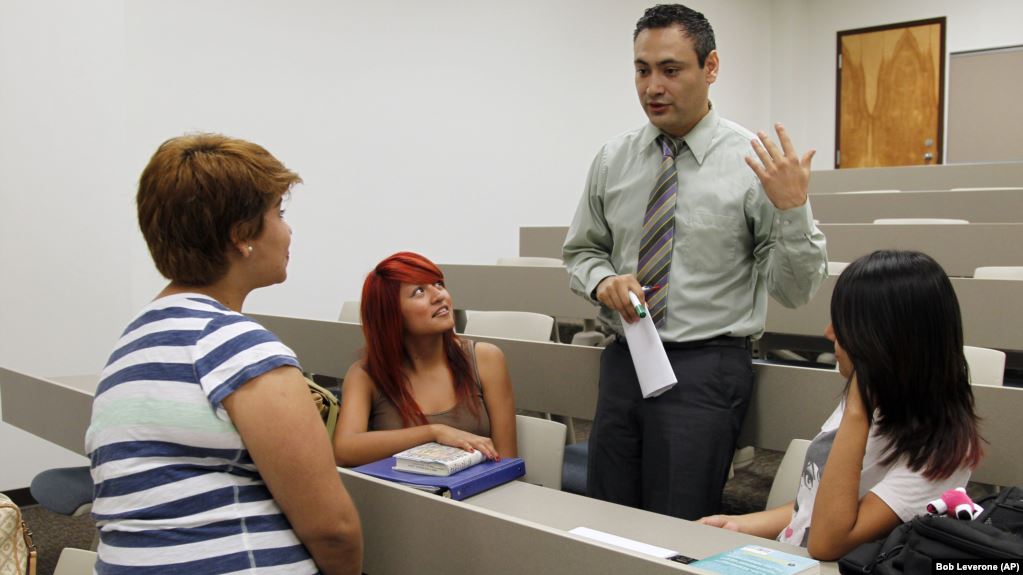 Does Higher Education Help Some Groups More than Others? A recent study suggests that higher education in the United States helps white people more financially than it does other groups.
Does Higher Education Help Some Groups More than Others? A recent study suggests that higher education in the United States helps white people more financially than it does other groups.
The finding makes some education experts question the effectiveness of U.S. efforts to fight racial injustice. At the same time, other experts note that systemic inequality and racial discrimination are not limited to the United States.
Last October, the Georgetown University Center on Education and the Workforce published a study on U.S. college graduates. Researchers looked at the earnings of white, black and Latino Americans who had earned a bachelor’s degree between 1991 and 2016.
Over that period, blacks and Latinos with a bachelor’s degree increased their likelihood of getting and keeping a good-paying job. The Georgetown researchers defined such a position as one paying at least $35,000 a year. But in 2016, white college graduates held 77 percent of the good-paying jobs. These men and women represented 69 percent of available job holders nationwide.
The study also showed that whites holding a bachelor’s degree and working in a good job earned about $10,000 more a year than blacks and Latinos with the same education.
Anthony Carnavale is the director of the Georgetown center. He describes the findings as just another example of America’s long history of treating minorities unequally.
The first blacks to arrive in North America came as slaves. Even after the United States banned slavery, many southern states created Jim Crow laws. These rules barred African Americans from many schools and fields of employment. Carnavale told VOA that conditions for black Americans improved somewhat over the years. But following World War II, many Whites moved out of major U.S. cities thanks, in part, to the financial aid they received for their military service.
This made it possible for majority white communities to build large tax bases, which helped finance strong public school systems, he said. This then made it possible for more whites to attend colleges and universities.
Carnavale added that Latinos did not become a major part of the U.S. economy until the late 1980s. He said they faced much the same discrimination as blacks. In more recent times, there have been efforts to reduce barriers to higher education, especially for minorities. For the most part, however, this has meant sending black, Latino and poor students to two and four-year public colleges and universities.
State governments give far less financial support to these schools than they used to, noted Carnavale. This means many of the schools struggle to support students as best they can.
“So we’ve created more access to higher education in America, but we have not created much more success,” he said. “The success, the graduation rates are highest, by far, for affluent white kids.”
Victor Goode argues that the inequality issue goes beyond education and extends into many other areas of American life. Goode is the education director for the National Association for the Advancement of Colored People, or NAACP, a U.S.-based civil rights group.
To date, the U.S. government continues to face problems in dealing with inequality in many areas, says Goode. In 2019, the U.S. Commis
Goode adds that a little over 65 years ago, the U.S. Supreme Court ruled states could not prevent Black students from attending the same schools as whites. But this year, a New Jersey judge agreed to consider a court case against the state’s public school system. The NAACP and other groups have accused the state of segregation based on race and earnings.
The NAACP is has also taken legal action to demand greater financial support for public schools from state governments in Maryland, Delaware and Minnesota.
“States…need to see how they can do a better job of providing an adequate, equitable education to all students,” noted Goode.
While every country is different, this kind of inequality exists in many majority-white nations, says Kyriaki Topidi. She is a researcher with the European Centre for Minority Issues.
Topidi notes that, in Germany, many recent African and Middle Eastern immigrants lack access to high schools with advanced study programs. And studies showed that employers in Britain were 60 percent more likely to consider White candidates for employment than Blacks or South Asians.
Topidi suggests one way to deal with this is by working with local governments to create anti-discrimination policies. Also, she said, leaders should try to get members of different races and economic levels to understand each other better through community-building events and training.
“This process should be based on the acceptance that people do not simply represent ‘ethnicities’ or ‘races,’ but rather are complex beings that also differ according to social status, interests, profession, beliefs,” she said.
Yet Anthony Carnavale is not hopeful that conditions for blacks and Latinos will improve in the United States any time soon. He says that unless wealthy White Americans are willing to spend much more in taxes to support public education, things will likely remain the same for the next 30 years.
I’m Dorothy Gundy.
And I’m Pete Musto.View

